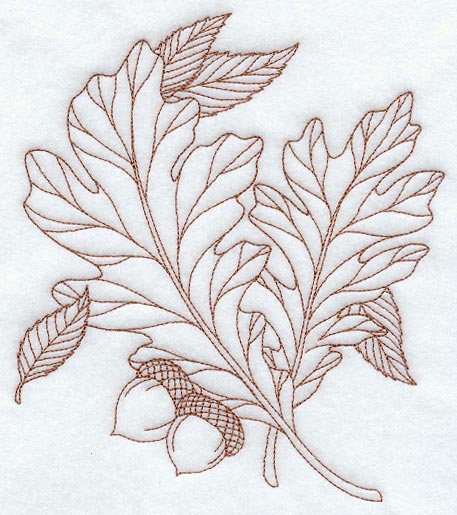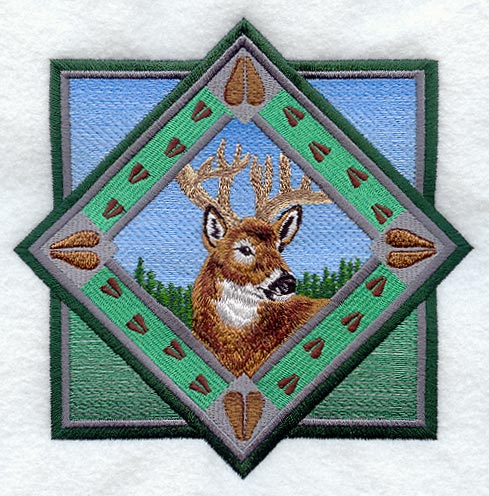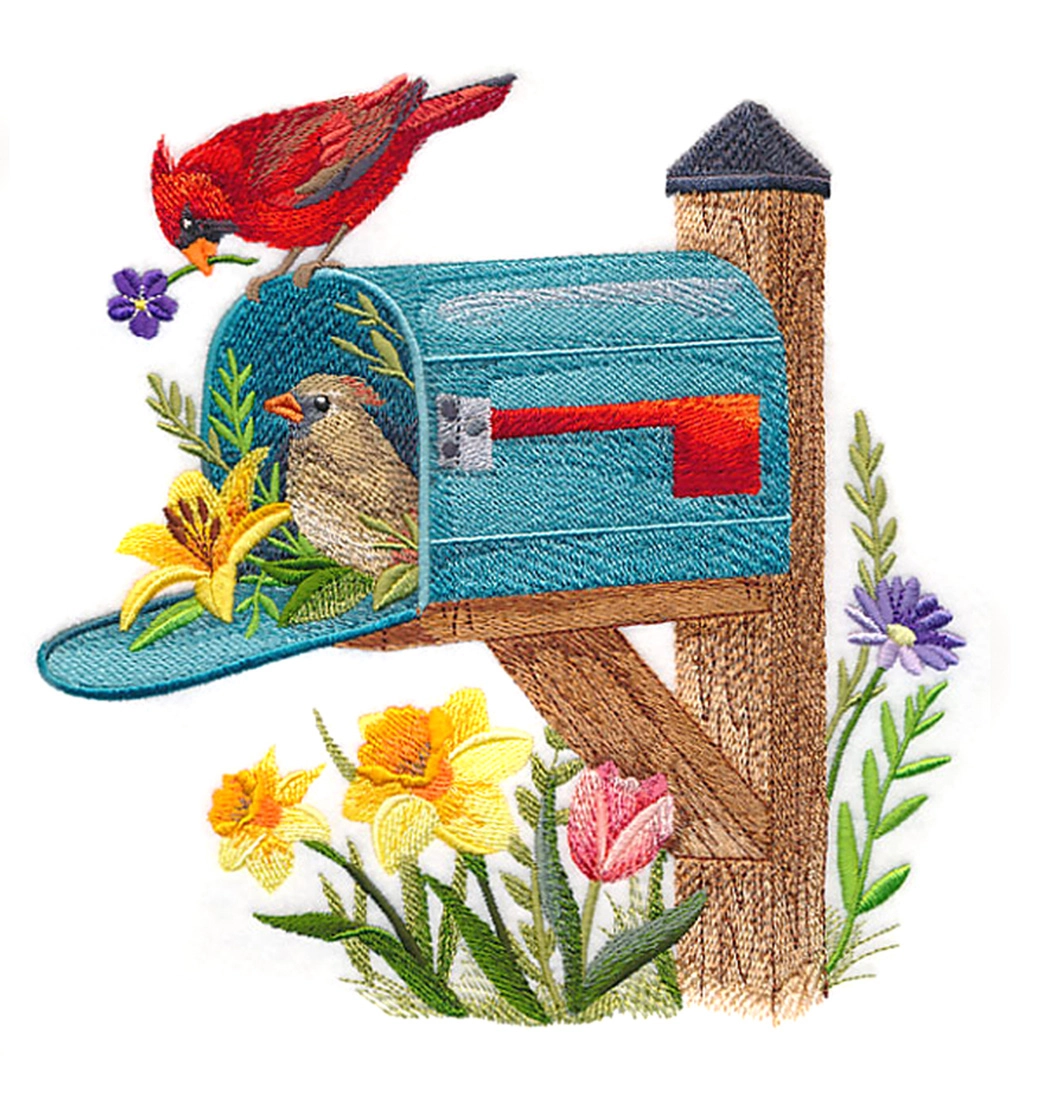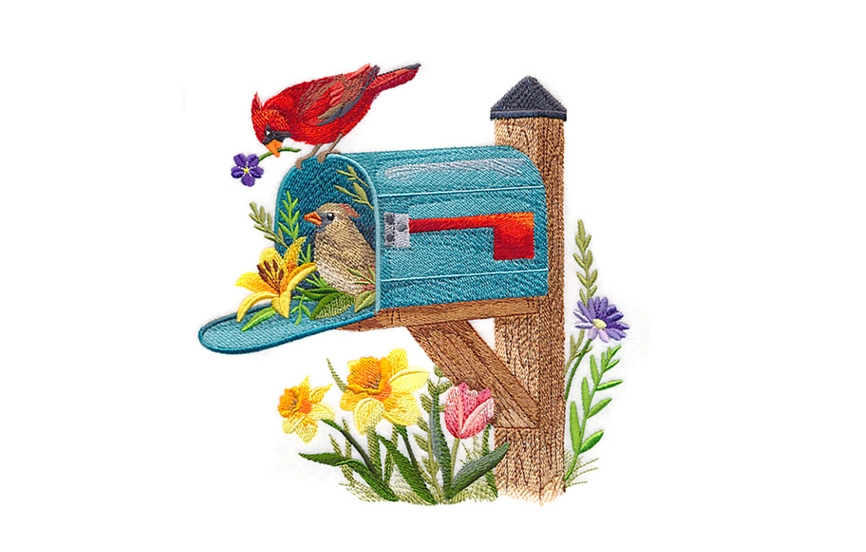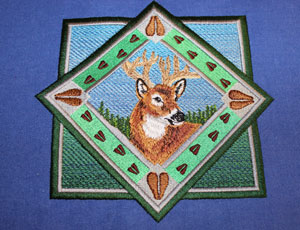
As the temperatures grow cooler, I look to flannel to keep warm and cozy. It's a versatile fabric that is soft to the touch, yet strong enough to embroider on and to withstand multiple washings. It's the perfect fabric for comfy shirts, loungewear, PJ's, and bedding, as well as quilts and baby blankets. As far as I'm concerned, flannel is a winner, especially during a long cold Minnesota winter!
Originally made from carded wool or worsted yarn, flannel is now made from wool, cotton, or synthetic fiber. Typically, it has either a single- or double-sided nap. The nap is the softness created by a mechanical brushing process that creates fine fibers from the loosely spun yarn, making the "fuzzy" feeling flannel often has. Since flannel is often made with 100% cotton, pre-washing before embroidering on it is a good thing. I'll have more on this later.
Early fall is a great time to sew flannel projects, as blanks are widely available in retail stores, and fabric stores frequently put flannel on sale for the season.
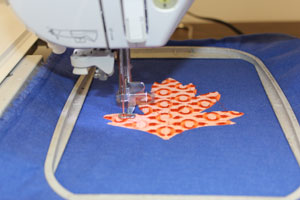
I love flannel's softness, and am amazed that it can be so soft and sturdy enough to support embroidery beautifully. Designs of varying complexity work well on flannel -- from lighter designs such as Redwork to more stitch-filled designs such as the Kaleidoscope Autumn Abundance Leaf in the photo on the left.
The questions I set out to answer about embroidering on flannel were what effect pre-washing would have on the embroidery, and which stabilizer would work best. Read on to see what I discovered!
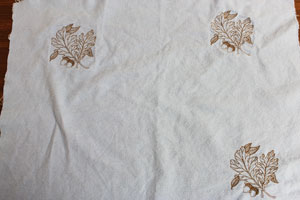
To see how pre-washing (or not) would affect my embroidery on flannel, I began with two pieces of 100% cotton flannel fabric.
I washed and dried one of the pieces before embroidering; for the other piece, I did not prewash. The fabric piece in the photo on the left is the one I did not pre-wash.
Because flannel is often 100% cotton, it usually shrinks when laundering. If embroidering without that pre-wash, the fabric is going to pull together (shrink) around the embroidery design once it's laundered.
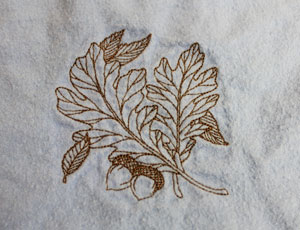
Here's a close-up view of the flannel that wasn't pre-washed, then embroidered. Do you see how the fabric is misshapen around the design? Pre-washing will cure that.
If I had pre-washed to shrink the fabric before I embroidered my design, the result would have been a smoother, more even look. See below for an example of this.
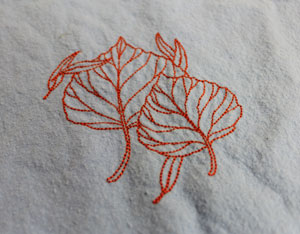
I pre-washed this fabric before embroidering, and you can see in the photo on the left that the design is smoother and the fabric lies flatter. There is still a bit of wrinkling in the pre-washed fabric, but once I run over this with a quick iron, that should disappear. (Remember to wait until you've washed the embroidered fabric before ironing.)
The second question I had was what kind of stabilizer would best support embroidery on flannel? As I walk through the clothing sections of department stores, I see many garments embroidered without backing. Sure, they look good in the store, but I have my doubts as to how long those garments will look nice after a lot of wash and wear.
To get a high quality look with an embroidery design that will last, stabilizer is a must. And good quality is the result I'm going for when I sew -- something that looks good, and stays good looking over time. That's why I think the right stabilizer is always a key to successful embroidery!
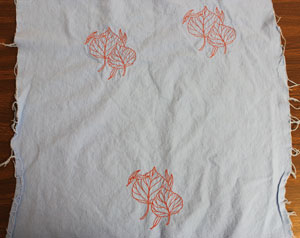
I stitched two light designs onto my fabric pieces: the White Oak Leaves (Redwork) and the Aspen Leaves (Redwork) designs. I used three kinds of stabilizers: water-soluble, tear-away, and cutaway. Read on to see how the different stabilizers performed on flannel.
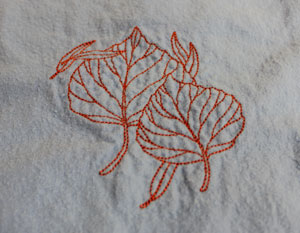
As you can see in the picture on the left, the tear-away stabilizer resulted in quite a bit of puckering. The design stitched with water-soluble stabilizer was slightly better. It looked smoother, but still had a bit of wrinkling.
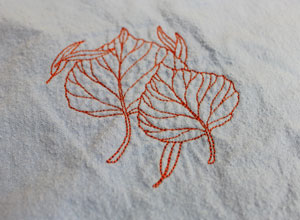
The stabilizer that gave me the best results was the cutaway. You can see the fabric is smoother inside the design. The outline of my stabilizer is visible in this photo because flannel is so soft and pliable, it conforms to the stabilizer, but running over the design with an iron will smooth it right out.
For stellar results when working with flannel, I recommend pre-washing your fabric and using a cutaway stabilizer.
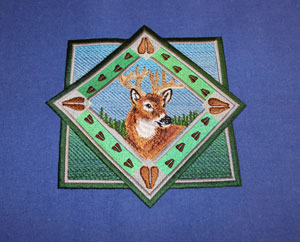
In the above examples I used very light designs - similar to Redwork. But flannel can support designs of a wide variety of complexity. I tested the Deer Track Portrait design on flannel. It's stitch-filled with layering and shading to achieve the photo-realistic look. I pre-washed the flannel, used a medium-weight cutaway and a sharp needle. The results are terrific!
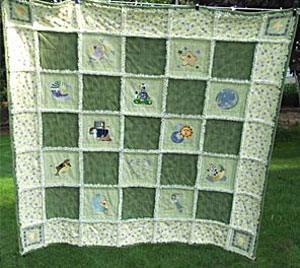
Winnie C. is famous for her fabulous rag quilts, and when her Baby-Soft Flannel quilt was featured in the Stitchers Showcase, she was kind enough to share her technique in this Flannel Rag Quilt Project.
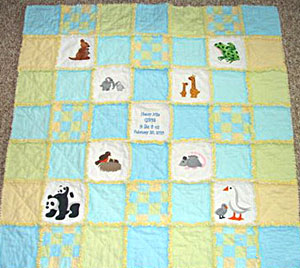
There are dozens of other examples of rag quilts in the Stitchers Showcase. You'll find a variety of themes, from baby quilts to Christmas quilts to rugged outdoorsy quilts. Let your imagination run wild!
